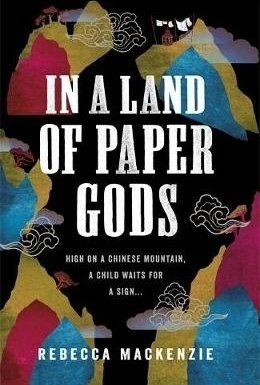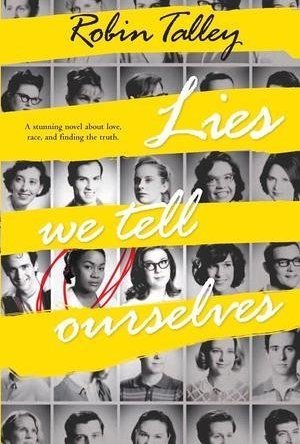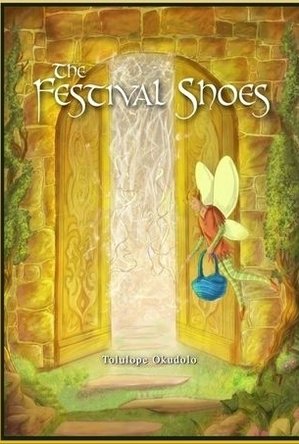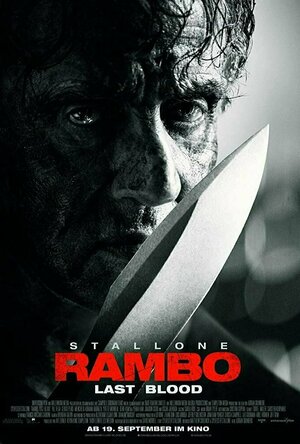Hazel (1853 KP) rated In a Land of Paper Gods in Books
Dec 17, 2018
“My name is Henrietta S. Robertson. That’s my English name… My Chinese name is Ming-Mei.”</i>
As the child of members of the Interior Alliance Mission, Henrietta has grown up between two cultures: English and Chinese. From the age of six she was sent to boarding school on a mountain in the Jiangxi Province, where four years later she remains as a small, pale, lonely girl.
For a girl as young as ten, Etta has a big imagination. She decides that God has called her to be a prophetess, and encourages the other girls in Dormitory A to join her in a Prophetess Club. This results is Etta getting into all sorts of trouble as she naively goes about inventing prophecies; all the while the Second Sino-Japanese War gets closer and closer to their mountain sanctuary.
Told mostly from Etta’s point of view, <i>In a Land of Paper Gods</i> is a hilarious historical novel about a young girl’s innocence. A large part of the story is about the missionary school rather than the ongoing war, therefore the focus is on Etta’s interpretation of the bible and her understanding of the differences between Western Christian and Chinese culture. However, once America joins the war effort, it is shockingly quick how the tale can go from humorous to heartbreaking.
The other character who plays a large part in this novel is Muriel, a dorm aunty, whom Etta regards highly. Muriel wanted to be a missionary but instead has found herself working at the Lushan school, keeping an eye on the ten and eleven year old girls. Although most of the book is written in Etta’s first person narrative, Rebecca Mackenzie has also included the occasional diary entry from Aunty Muriel. Since these are so few, it is not clear what their purpose is, as the story could easily continue without them.
Despite being an historical novel, <i>In a Land of Paper Gods </i>focuses less on fact and more on the impact the times had on a young girl. It is interesting to see the character development of Etta as she goes from a naughty, attention-seeking schoolgirl, to a young woman who must fend for herself. All the while she has her belief in God to resort to for explanations about the world she is living in. The reader also witnesses the growth of a relationship between Aunty Muriel and Etta. To begin with it is that of an adult and child, however it ends with them being equals in their suffering.
<i>In a Land of Paper Gods</i> is a pleasure to read. It is comically entertaining to begin with as the reader grows to love the characters, particularly mischievous Etta. It is hard to put the book down due to pure delight of the storyline, yet when the story turns darker it is just as difficult to put down, as we want to find out if the characters are going to be okay.
For some people, the Christian content will not mean anything, however it is possible to enjoy the novel without a religious background. For those, like myself, who do have a Christian upbringing, this aspect makes the story even better. Readers may recognize themselves or of their childhood in Etta, particularly her understanding of the bible.
Overall I loved this book. I was not sure what to expect, and have often found historical novels set in China to be rather dull. Therefore I was pleasantly surprised to discover how good this book was. I encourage others to read <i>In a Land of Paper Gods</i>, and I look forward to reading what Mackenzie writes next.
Hazel (1853 KP) rated Lies We Tell Ourselves in Books
Dec 17, 2018
<i>Lies We Tell Ourselves</i> by Robin Talley is a realistic tale about the beginning of the integration of coloured people into white schools in late 1950s America. In Virginia it is 1959 and ten Negros are beginning their first day at Jefferson Highschool. The experience is narrated from one of the ten, Sarah’s, perspective. In other parts of the novel the voice changes to that of Linda, a particularly nasty white girl, who is one of countless students opposed to integration.
Although many young people will have been taught about the black civil right movement it is still shocking to read about the horrible things they had to endure. By writing in the first person, Talley encourages the reader to try to understand how they would feel in a similar situation. Sarah and her friends instantly become the victims of verbal and physical abuse that members of authority turn a blind eye to.
To Sarah, Linda is a nasty spoilt bully who, although does not join in with the taunting and abuse, is as bad as the rest of them. Through reading Linda’s account it becomes clear that her behaviour has a lot to do with her home life, in particularly with her father’s attitude towards her. After being forced to partner Sarah for a French project Linda begins to question why there is so much emphasis on skin colour, however not wanting to be shunned by her own friends she keeps these thoughts to herself.
Sarah is also struggling to come to terms with her sexual preference for girls. It has been drilled into her that these thoughts are a sin. She hides her true feelings from everyone and constantly berates herself mentally for being “unnatural”. But it turns out she may not be the only one with these thoughts.
The lies referred to in the title are not the blatant or harmful lies but rather the lies the characters believe or even want to believe. Each chapter begins with a lie that reflects what is occurring in the novel at that time; for example “There’s no need to be afraid” and “I don’t care what they think of me.” This is an interesting way of telling the story as it emphasizes Sarah’s determination to keep going despite what she is subjected to. It also reveals the mental struggles she faces. On the other hand the lies disclose Linda’s conflicting feelings towards the South’s current situation and segregation laws.
Although not a religious novel, each part begins with the title of a Christian hymn. It was the norm for everyone to go to church and, despite the separate churches, was something black and white people did. Sarah and Linda have faith in God yet they both use the bible’s teachings for opposing arguments. The religious aspect also highlights Sarah’s self-hatred and belief that she has fallen into sin.
Unfortunately in today’s world there are still issues with racism and homophobia however after reading <i>Lies We Tell Ourselves</i> it is evident that these situations have vastly improved, at least in the Western world, since the 1950s. Without children such as Sarah going through these horrible experiences nothing would have changed. There would still be separate schools, slavery and inaccurate opinions about race inequality. America has a lot to thank these brave students who were the first to create mixed race schools.
Overall this is a brilliant book. Well written and realistic, it really draws the reader in to the characters’ stories. Although <i>Lies We Tell Ourselves</i> is a work of fiction, it is historically accurate and can teach a lot about America’s history to young adults today.
Hazel (1853 KP) rated The Festival Shoes in Books
Dec 17, 2018
The Festival Shoes</i> by Tolulope Okudolo is a fairy story (literally) for young children. Although referred to as “pixies,” the illustrations provided by Eric Scott Fisher look like typical western imagery associated with the magical, winged creatures. The main character, Drumlo, is an ebullient pixie who is about to embark on his first trip to Earth in order to deliver a very important gift. With so much relying on his success, it would be absolutely awful if something went wrong.
Weaverton, the name of the land of fairies, is an invisible world that lies above the Earth. Whenever a child has a good thought or does something virtuous, a colourful string, unseen by the human eye, snakes its way up to the hidden land. Collected by pixies, these threads are woven into magnificent presents, which are delivered to the children as rewards on the day of the Great Festival. In order to prove himself as capable, Drumlo has been charged with safely transporting a pair of shoes to a truly deserving girl. With an effulgent thread as a guide, Drumlo sets off on his exciting mission.
The author is the founder of the publishing company Magnifying Children’s Horizons, which aspires to inspire children physically, mentally and spiritually about the natural world. Tolulope Okudolo’s author biography implies she is a Christian and likes to bring this aspect of her life into her writing. Although, as far as we know, fairies and pixies only exist in folklore, Tolulope retains the idea of the existence of God by referring to an unseen High King who lives above Weaverton. In this respect, the Great Festival and gift giving become similar to our Christmas tradition.
<i>The Festival Shoes</i>, however, is not intended to be a Christian book. Its purpose is to enhance children’s creativity and character by showing them the impact of their good and bad behaviour by emphasising the idea of receiving rewards. Whilst Drumlo is on his journey to Earth, he passes through the land where all bad thoughts and actions go. Compared with everywhere else, this place looks dull and gloomy, which goes to show what happens when nature is neglected and not cared for.
Another important message <i>The Festival Shoes</i> shows children is to have faith in themselves to do something for the first time. Drumlo had never been given such responsibility before, but he believed he could do it. Even though something goes wrong, his faith sees him through. He does not give up, everything works out in the end.
Reading the book as an adult, <i>The Festival Shoes</i> is not all that interesting. The ending comes about too quickly and, although the author is trying to emphasise that Drumlo’s faith saves the day, he does not physically do anything to fix what goes wrong – slightly misleading, perhaps?
The coloured illustrations that appear on every other page are pretty but do not help to tell the story. It is not a picture book for very young children; it is the next stage up. With discussion questions at the end of the book, <i>The Festival Shoes</i> is for parents and children to read together and think about their own impact on the world and nature.
Unfortunately, the book does not look professionally produced. The choice of typeface is uninspiring and the illustrations do not always slot into place well, leaving awkward layouts. As an eBook, this does not matter too much, but if it were to be printed, sales are unlikely to rocket.

Tattoo Fonts - design your text tattoo
Lifestyle
App
Introducing TattooFonts 2 Rewritten completely from scratch. Sharpest fonts, fastest rendering time....
Darren (1599 KP) rated Rambo: Last Blood (2019) in Movies
Sep 26, 2019
Performances – Sylvester Stallone is back in one of his favourite franchises, he does keep John looking a lot more like a true veteran that is still haunted by his nightmares of war, even if he is mumbling his way through the film. Yvette Monreal fills her role with ease, naïve young girl, while both Oscar Jaenada and Sergio Peris-Mencheta don’t put a foot wrong in the villainous roles.
Story – The story here follows a retired calm John Rambo that is called into action when his adoptive daughter gets taken by a gang in Mexico and he will go to any lengths to get his revenge at save her. When it comes to this style of action film, the story doesn’t need to be very deep at all, in fact the basic plot is broken down as war veteran takes on gang who took family member, lots of bodies left lying. We do get glimpses at the idea that John is still dealing with the traumas of his experiences in war, though they are very small, if we didn’t have these, we could have easily have had just another older military person doing the same thing, it didn’t need to be Rambo for the most part. Saying this, it was nice to see Rambo returning to what made his actions popular in the First Blood, with his stealth ability over the countless bullets flying around. This is everything you want and need from a Rambo movie when it comes to the story.
Action/Western – The action in the film does take it time to get going, but when Rambo starts, my word this is one of the most graphic action movies you will see, certain sequences will make John Wick’s kills look like a Disney movie.
Settings – The film does use the Mexico setting for the fish out of water when it comes to John wanting to take the fight to them, so he makes them bring to the fight to him, showing us how deadly he is when he knows the land. The settings are key to the final act of the movie.
Special Effects – The effects are brutal, when it comes to the injuries people were wincing in the cinema at certain moments, they don’t hold back in anyway.
Scene of the Movie – Whole final act.
That Moment That Annoyed Me – Certain stories don’t seem to get an ending.
Final Thoughts – This is one of the most violent action films that you will ever see, it uses the brutal action to highlight Rambo’s military skills and doesn’t hold back in anyway.
Overall: Graphic, Violent, Rambo’s Back.

Meditation Sounds and Ambient Music to Meditate
Health & Fitness and Lifestyle
App
We believe that the term "meditation" is a result of differing sets of practices that are found...

Happy Deepavali Diwali Greeting Cards Wish
Lifestyle and Social Networking
App
Celebrate the Festivals of lights and express your love to your loved ones by using and sending...

Traveloka Book Flight & Hotel
Travel and Lifestyle
App
*1st Winner of “One to Watch” at BrandZ™ Top 50 Most Valuable Indonesian Brands in 2016* *Top...

MyKeto - Low Carb Keto Tracker
Health & Fitness and Reference
App
What is the Ketogenic Diet? The Ketogenic diet is a fast-growing low carbohydrate, high fat (lchf)...




